Asana vs Jira
Learn more about your options and pick the best tool for your team.
Asana and Jira are among the most widely used task and project management tools. Both of them count thousands of organizations, teams, and individuals among their loyal customers. So if you are evaluating project management software, it's natural for these two products to end up on your shortlist.
But while both tools are popular, they tend to appeal to different audiences. There is no objective "winner" between the two of them, but one of them may be a much better fit for your team than the other.
So which of them should you choose for your business? In this article, we will take a closer look at both Asana and Jira and examine their strengths and weaknesses to help you make the right decision for your company.
Asana and Jira compared
Both Asana and Jira are rated a respectable 4.4 out of 5 on Capterra based on over 10,000 reviews. These two tools may appear quite similar on the surface, but they also have some fundamental differences that need to be kept in mind when making a decision. Let's dive deeper into what Jira and Asana have to offer and also have a look at other alternatives you may want to consider.
Asana
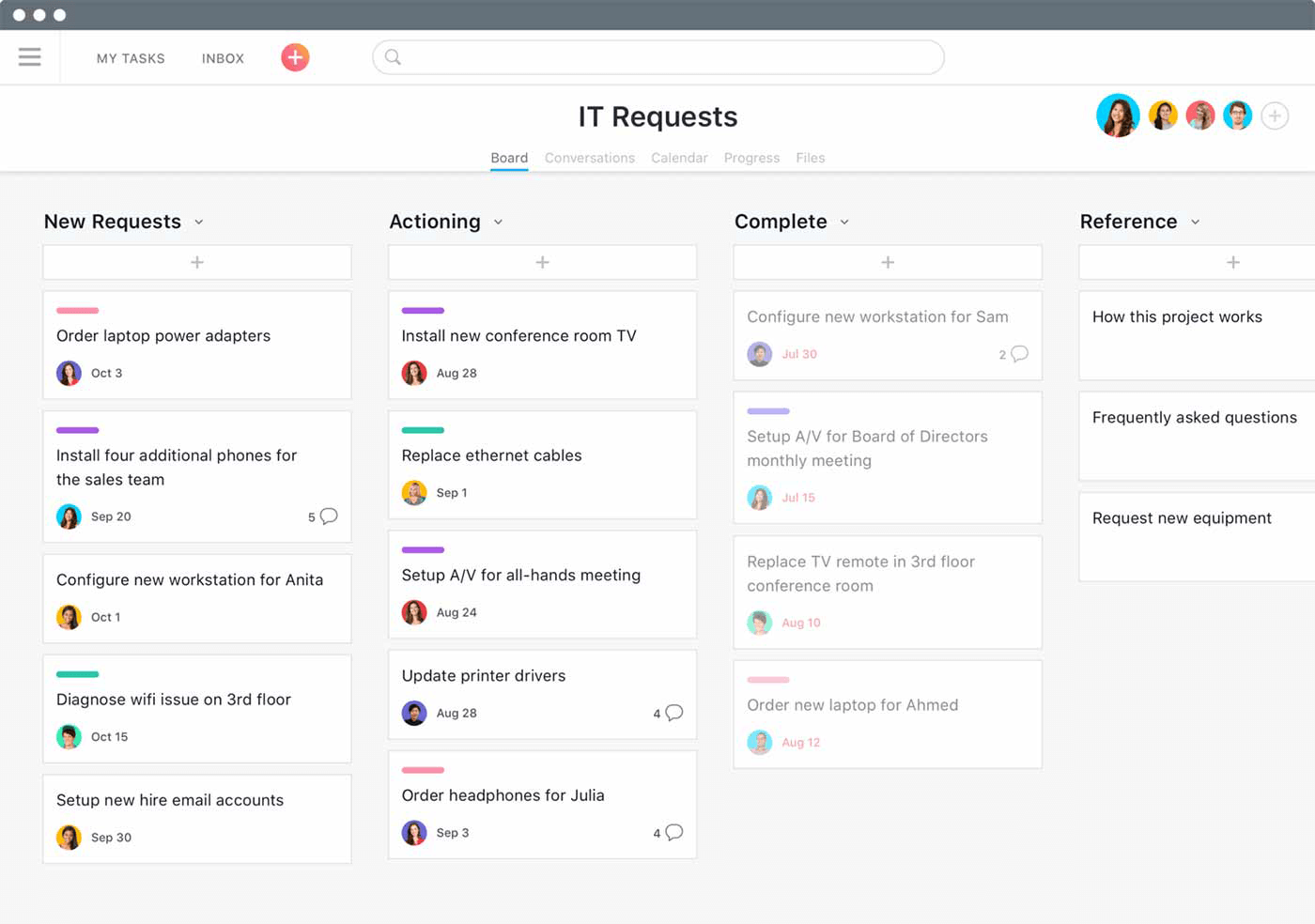
Pricing: Free, advanced features starting from $10.99/user/month
Rating on Capterra: 4.5/5
When Asana was first launched in 2011, it was a simple to-do app. 10 years and many funding rounds later, it evolved into a full-fledged project management tool. Today, it offers a very extensive feature set that includes almost anything you may need to successfully keep track of your projects – Kanban boards, timelines, task automation, filters, checklists, and more.
Unlike Jira, which is largely geared towards developers, Asana is designed as a general-purpose tool. Its interface is relatively simple and intuitive, and setting it up doesn't require any complex configuration. If your team isn't following the Agile workflow to manage projects, Asana may be the better option for you.
Why you might prefer Asana over Jira:
Most users agree that Asana has a more intuitive interface and a lower learning curve than Jira.
Asana works out of the box and doesn't require as much configuration as Jira.
Asana is a general-purpose project management tool suitable for non-technical users. Jira is designed primarily for software development teams.
Asana has a more polished mobile interface than Jira.
The free plan of Asana has fewer restrictions, making it easier to get started with the tool, even on a limited budget.
What users say about Asana:
"Jira was over-engineered for our requirements. Asana is very easy to implement and to onboard new users. The interface is attractive and very intuitive."
"Jira felt a little too complex for the needs of a smaller team. Asana is a fantastic project management and collaboration tool. It allows you to assign tasks to team members, set due dates, and communicate with anyone tracking a project. It's also a great tool for keeping track of personal projects and general to-do lists."
Looking for more tools similar to Asana? Check out this list of Asana alternatives.
Jira
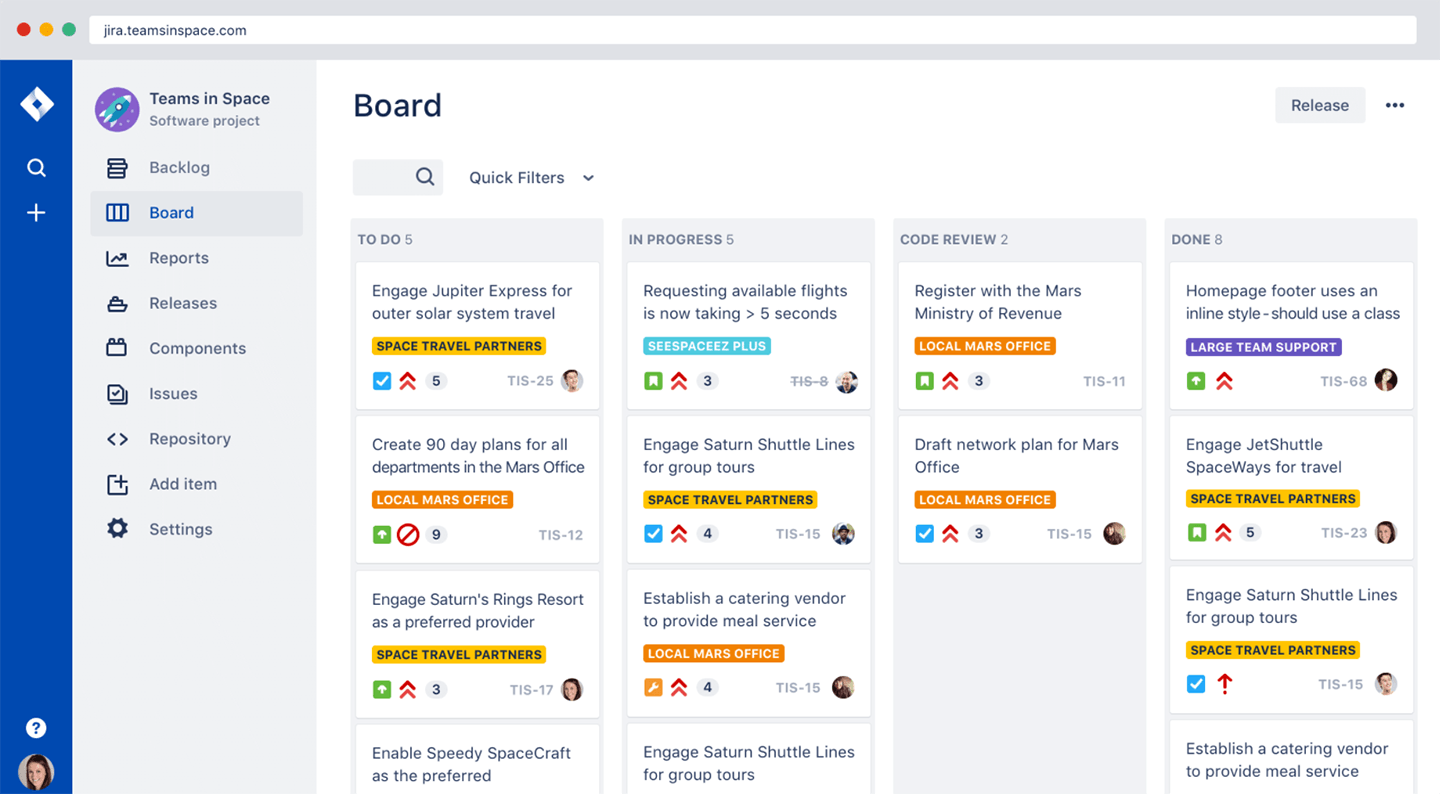
Pricing: Free, advanced features starting from $7.50/user/month
Rating on Capterra: 4.5/5
Jira is, first and foremost, a project management tool for Agile software development teams. It allows you to plan sprints, prioritize your backlog, define epics and user stories, and more.
It's exceptionally powerful, allowing you to manage the most complex and large-scale projects. It also offers a wide range of customization options, allowing you to adjust the tool to fit your unique workflow.
At the same time, compared to Asana, Jira is very feature-heavy and comes with a steep learning curve. If you are a large, experienced software development team, you may certainly find Jira to be superior to Asana. For non-technical teams, however, this tool can be confusing and unintuitive.
Why you might prefer Jira over Asana:
Jira is developer-friendly and offers a wide range of specialized features, including Agile reports, velocity charts, Scrum tracking, and more.
Atlassian offers a wide range of complementary products, including Confluence and BitBucket, all of which are tightly integrated with Jira.
Jira can be customized in a more granular way than Asana.
Jira has a more extensive feature set than Asana.
Jira offers lower per-user subscription fees, making it a more affordable alternative.
What users say about Jira:
"Asana did not offer the same ease of use when it comes to segmenting projects, running sprints, or handling issues. Jira was much better suited to an agile, fast-growing software company with beautiful Gantt chart and roadmap visualizations that were game-changing for overall project coordination."
"Jira is the gold standard in the software development industry. It's more robust than Asana or Trello, and it's less convoluted than the Microsoft product."
Looking for more tools similar to Jira? Check out this list of Jira alternatives.
Other alternatives
It should be mentioned that your options are not limited to just Jira and Asana. There are many other great project management apps that can serve you just as well.
Many users find both Asana and Jira to be fairly slow and complex for their needs. If you are looking for a more lightweight, fast, and easy-to-use solution, Nuclino may be a better option for your team. Minimal by design, Nuclino focuses on simplicity, doing away with clunky menus and lowering the learning curve for new users.
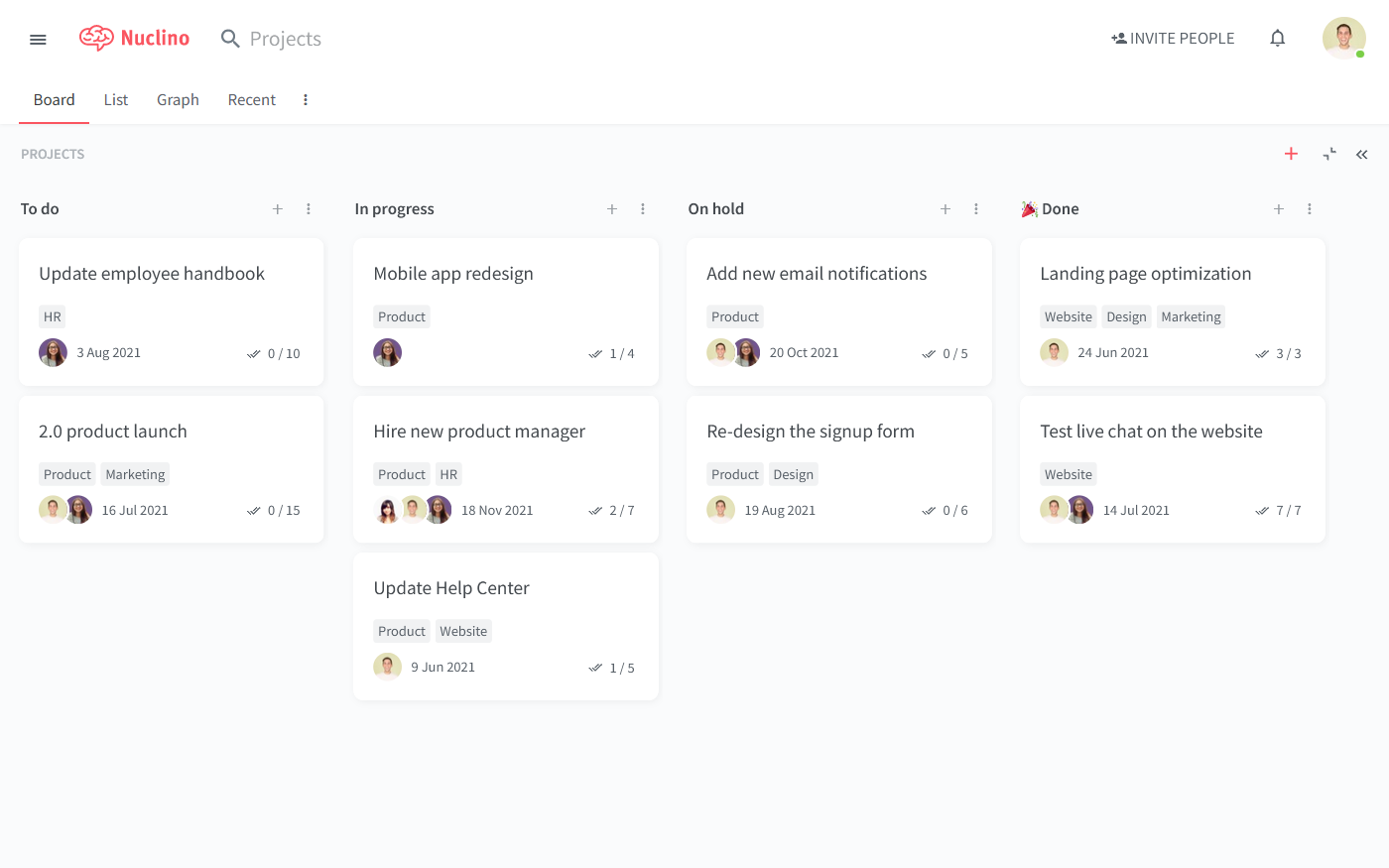
Like Jira and Asana, Nuclino allows you to visualize your work in different ways, including a list, a board, a table, or a mindmap-style graph.
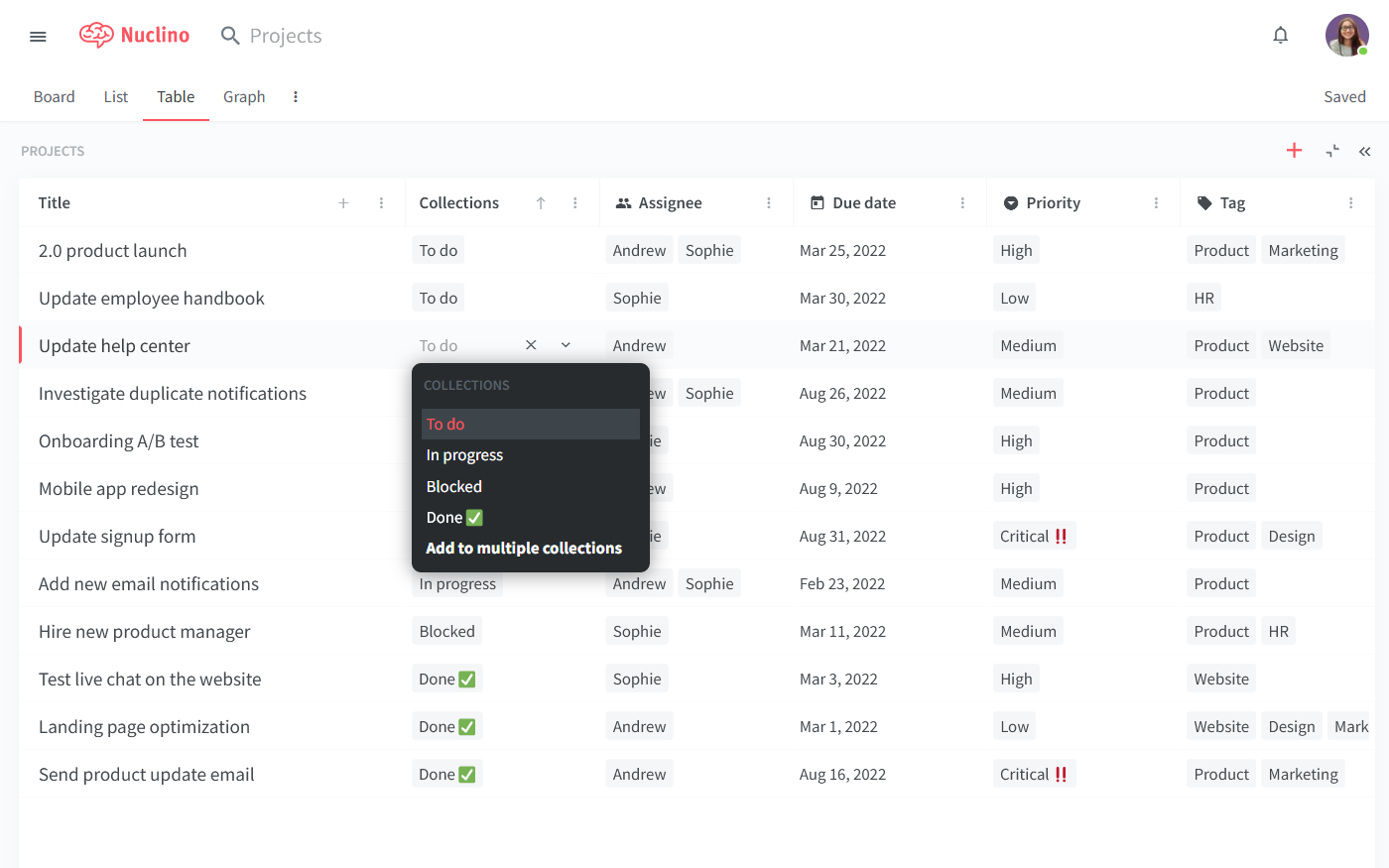
Nuclino stands out, however, thanks to its unique approach to bringing together structured data and long-form content. Every item in Nuclino is its own document that can be collaborated on in real time. You can add notes, create to-do lists, set due dates and reminders, embed files, and more, managing and simultaneously documenting your projects in one place. You can use comments to exchange feedback directly in Nuclino and preserve the context of every decision. Imagine if every task in Asana or Jira had its own Google Doc.

But project management is just one example of what you can do in Nuclino. It's a highly flexible and versatile tool that is suitable for a wide range of different use cases. You can use it to take notes, create internal documentation, build your internal knowledge base or team wiki, and more. Nuclino works like a collective brain, allowing you to bring all your team's knowledge, docs, and projects together in one place.
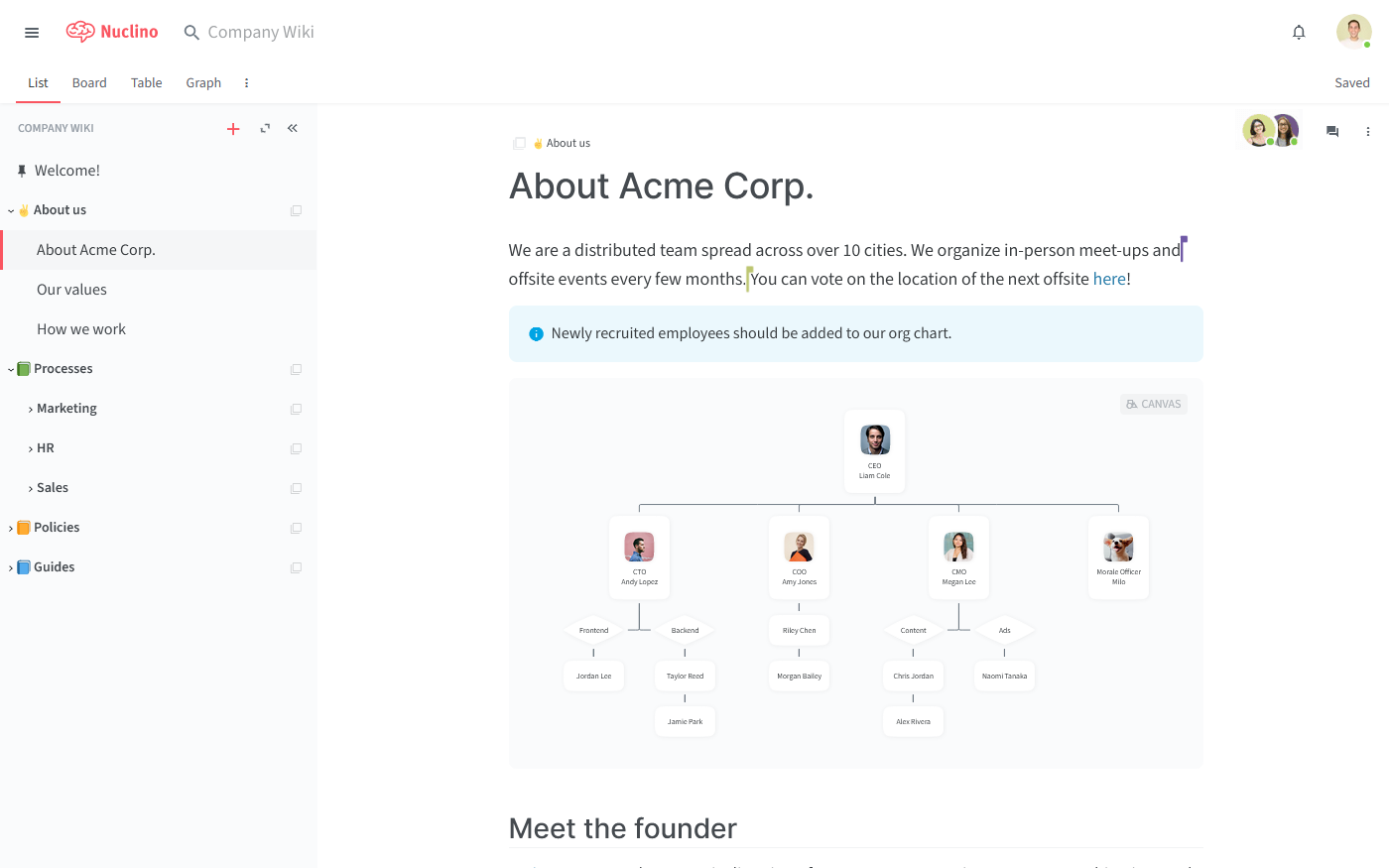
Asana vs Jira: So which is better?
Asana and Jira are designed for different types of teams and workflows, and there is no objective winner between the two of them. Developers tend to favor Jira, while if you are a non-technical team, you may prefer Asana. On the other hand, if you like the idea of bringing your projects and documentation together in one place, Nuclino may be a great option for you.
At the end of the day, the best choice depends on your team's unique preferences and requirements. We hope this article has made your decision a little easier.
Ready to get started?
